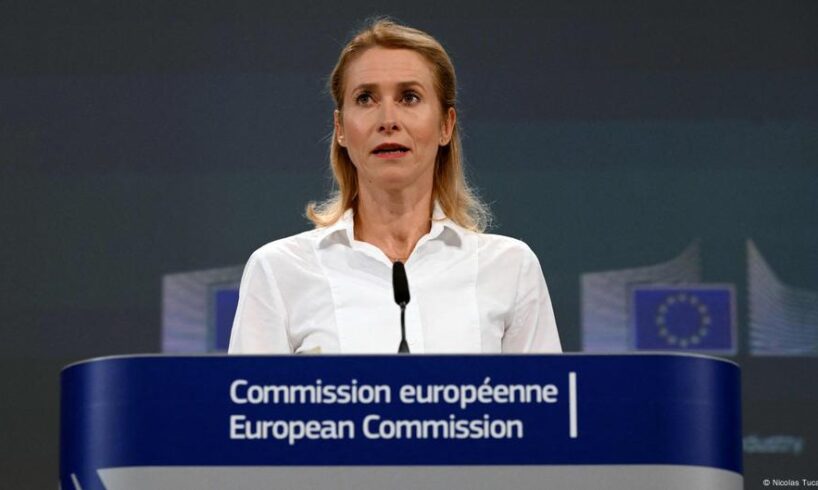
The EU has no choice but to bulk up anti-drone defenses in the face of continued Russian agitation says top diplomat Kaja Kallas. The foreign policy representative made the remarks as she presented a “defense readiness roadmap” outlining preparations for a Russian attack in the near future.
Part of the EU plan is the creation of a so-called “drone wall” as European Commission President Ursula von der Leyen has dubbed it.
Calls for such defenses have grown of late as Russia increases the frequency of its encroachments — both with conventional aircraft as well as increasingly, unmanned aerial vehicles (UAVs) or drones — into EU airspace.
“Drones are already redefining warfare,” said Kallas in Brussels, adding: “Having drone defenses is no longer optional for anyone.”
The proposed EU system is to be operational by 2027, according to Kallas. Initial plans envisioned a setup on Europe’s eastern border. But recent incursions further west have changed that calculus.
The new European Drone Defense Initiative is to begin operations in 2026 and be fully functioning by late 2027.
“Russia has no capacity to launch an attack on the European Union today,” said Kallas, “but it could prepare itself in the years to come.”
“Danger,” she said, “will not disappear, even if the war in Ukraine will end.”
Whole of EU and Eastern Flank approaches
Beyond the European Drone Defense Initiative, Brussels is looking to beef up defenses along its borders with Russia and Belarus.
Eastern Flank Watch is the designation under which the EU will “fortify the EU’s eastern borders across land, sea and air” and harden its posture along the EU-Russia border by the end of 2028.
Lithuanian Defence Minister Dovile Sakaliene said Thursday, “It’s our joint responsibility to protect the Eastern border — all of us.” Noting that Moscow was “clearly intensifying its hybrid war” against Europe, she said, “I’d like to have it sooner, because what we see is a rapidly rising concentration of incidents.”
Russian troops on Estonian border raise NATO concerns
To view this video please enable JavaScript, and consider upgrading to a web browser that supports HTML5 video
EU air and space shields in the works?
In its outline, the EU also pitched the idea of both a European Air Shield and a European Space Shield to defend against missiles and protect space assets.
European leaders, especially von der Leyen, who said “recent threats have shown that Europe is at risk,” have looked at these initiatives as potential drivers of defense industry progress, greatly increasing the bloc’s defense production capabilities.
The EU has not put price tags on these projects, nor has it specified where the funds to pay for them will come from.
The plans call for more closely integrating both national armies and defense production in order to establish a true EU-wide market with harmonized rules that would enable industry to “deliver at speed and volume.”
Traditionally, the EU has tended to play a minor role when it came to defense, with individual governments and NATO taking the lead. But this has led to the fracturing and withering of the bloc’s defense sector and spending on it, despite the bloc’s collective defense budget having doubled to €400 billion ($467 billion) since 2021.
When leaders from the bloc’s 27 member states meet in Brussels next week, not only will they be taking stock of whether they can hold Russia in check, but also how generous their largest economies are prepared to be when it comes to defense and putting benefits to the continent as a whole ahead of national concerns.
Leaders of the EU’s 27 member governments will decide whether to endorse the flagship proposals when they meet on October 23.
Edited by: Roshni Majumdar





